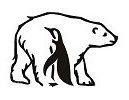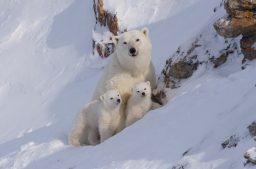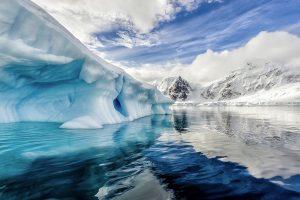
The use of UAVs in the Wrangel Island Nature Reserve. Source: https://dji-blog.ru/
The use of UAVs in zoology
Unmanned aerial vehicles are becoming increasingly popular in various fields of science, and zoology is no exception. Bird’s-eye observations allow zoologists to collect fresh data for research with much less material and time costs than for ground work.
Accounting and estimating the number of species is important for researchers, since the animal world is an integral component of any biocenosis, and the dynamics of populations in a particular ecosystem is one of the main indicators of its condition.
In Russia, zoological studies to account for animal individuals are carried out mainly in specially protected natural areas, since it is in protected areas that specialists make efforts to preserve populations and maintain numbers. Thanks to the activities of species protection, researchers conduct a quantitative assessment of individuals with the necessary frequency, and today many reserves have already used drones for this task.
The increased need for drones is undoubtedly felt by protected areas in rugged mountainous areas where it is difficult to regularly organize hiking raids – for example, in the Caucasus. The Caucasian Biosphere Reserve became one of the first environmental organizations in Russia to introduce UAVs into operation. The staff received special training and performed the first flights to track the migration routes of wild animals in 2015.
The unique ecosystem of Lake Baikal is an object of protection of the Federal State Budgetary Institution “Reserved Podlemorye”. The department of the institution has as many as three huge territories: the Barguzin Nature Reserve, the Baikal National Park and the Frolikhinsky Nature Reserve. In such open spaces, one cannot do without helpers in the air: with the help of drones, populations of species such as brown bear, elk, Siberian roe deer and, of course, the famous Baikal endemic, the Baikal seal, are estimated.

The rookery of the Baikal seal. Source: https://zapovednoe-podlemorye.ru/
Monitoring of animals in nature reserves
Many zoologists are now actively introducing drones with thermal imagers into their activities. Among the Russian protected areas, the use of these technologies can boast of the Wrangel Island Nature Reserve, where the number of polar bears is recorded. Thermal imaging cameras help employees get information about heat from polar predators, which allows specialists to understand exactly where the dens are located and how many individuals are there.
Reserves in the Far East are not lagging behind: the purchase of a quadcopter facilitated the work of a team of zoologists from the Commander Reserve, who keep records of a rare subspecies of seals – antura. Experts note that this subspecies is very capricious with regard to habitat conditions, and for the whole year there are only a couple of weeks – during strong tides on the coast – when it is possible to keep records of individuals. Previously, they relied solely on visual counting, which gave great results.
In the Kronotsky Nature Reserve, one of the key areas of work of the scientific department is monitoring the last wild reindeer population in Kamchatka. Helicopter surveys are conducted every few years, but in some particularly important areas – favorite perennial pastures – the staff of the protected areas conduct observations much more often.
It is extremely difficult to keep track of ungulates, since they are gregarious animals, and they rarely move alone. Therefore, the task is to count the number of individuals during a visual encounter, which is much easier to do by lifting a drone into the air, especially if we are talking about a large herd of several dozen heads.

A herd of wild reindeer. The photo was taken by the author.
And how are things in other countries?
Employees of environmental organizations from other countries also share positive feedback and amazing results of such innovations in zoological research. The Great Australian Gulf Marine Park is located in the south of Australia – a group of marine protected areas where the coast is steep hundred-meter cliffs. And at the foot of the cliffs there are dozens of colonies of the sea lion, a red–listed endangered species.
One of the park’s employees, Dirk Holman, told ABC News that before using the UAV, he and his colleagues simply looked down through binoculars, trying to determine the number of puppies. In the first study, about 385% more individuals were recorded using a drone than during the previous count. As Holman notes, this is not due to the restoration of the population, but rather to the opportunity to gain visual access to all colonies for the first time.
Foreign research involving drones is no less interesting. Thermal imaging is often used for species whose representatives are small or difficult to detect in their natural environment. A group of employees from the Danish Technical University, the University of Aalborg and the Aalborg Zoo (Denmark) conducted population surveys of the European hare in the spring.
However, thermal imaging also has its drawbacks – other species of animals were recorded in the images during the flights. But Danish scientists found a way out of the situation: to distinguish hares from other species, they calculated the average size of each animal in pixels, so that the data on the population of hares were not distorted.
By Ekaterina Shitz


